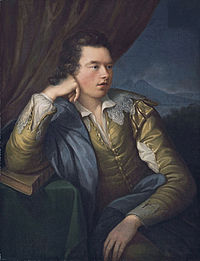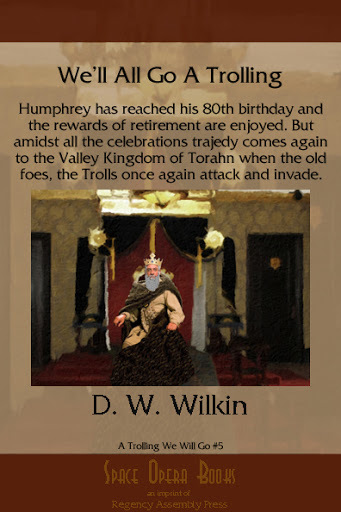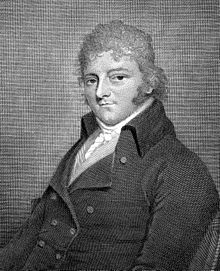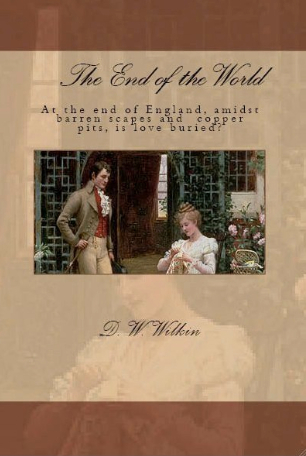D.W. Wilkin's Blog, page 16
November 7, 2016
Regency Personalities Series-George Rennie (Agriculturist)
Regency Personalities Series
In my attempts to provide us with the details of the Regency (I include those who were born before 1811 and who died after 1795), today I continue with one of the many period notables.
George Rennie (Agriculturist)
(1749–1828)
George Rennie (Agriculturist) was the son of James Rennie, farmer, of Phantassie, Haddingtonshire (now East Lothian), and elder brother of John Rennie, the engineer, born on his father’s farm in 1749.
On leaving school he was sent by his father, at the age of sixteen, to Tweedside to make a survey of a new system of farming which had been adopted by Lord Kames, Hume of Ninewells, and other landed gentry of the district. In 1765 he became superintendent of a brewery which his father had erected. The elder Rennie died in 1766, and, after leasing the business for some years, the son conducted it on a large scale from 1783 to 1797, when he finally relinquished it to a tenant. Rennie then devoted himself to the pursuit of agriculture on the Phantassie farmland and in 1787 he employed Andrew Meikle, the eminent millwright (to whom his brother, John Rennie, the engineer, had been apprenticed) to erect one of his drum thrashing-machines. This was driven by water. When Meikle’s claims as the inventor were disputed, Rennie wrote a letter in his favour, which was printed in A Reply to an Address to the Public, but more particularly to the Landed Interest of Great Britain and Ireland, on the subject of the Thrashing Machine.
Rennie died on 6 October 1828. He was one of the authors of A General View of the Agriculture of the West Riding of Yorkshire…. By Messrs. Rennie, Brown, and Shirreff, London, 1794, written for the Board of Agriculture’s General View of Agriculture county surveys. Other writing, co-authored by the science writer Robert Brown, discussed the practical application of new techniques. His son, George achieved notability as a sculptor and politician.


An Unofficial Guide to how to win the Scenarios of Soaked the 1st Expansion for Rollercoaster Tycoon 3
An Unofficial Guide to how to win the Scenarios of Soaked
I have been a fan of this series of computer games since early in its release of the very first game. That game was done by one programmer, Chris Sawyer, and it was the first I recall of an internet hit. Websites were put up in dedication to this game where people showed off their creations, based on real amusement parks. These sites were funded by individuals, an expense that was not necessarily as cheap then as it is now. Nor as easy to program then as it might be to build a web page now.
Prima Books released game guides for each iteration of the game, Rollercoaster Tycoon 1, Rollercoaster Tycoon 2 and Rollercoaster Tycoon 3 (RCT3) but not for the expansion sets. And unlike the first two works, the third guide was riddle with incorrect solutions. As I played the game that frustrated me. And I took to the forums that Atari, the game publisher hosted to see if I could find a way to solve those scenarios that the Prima Guide had written up in error. Not finding any good advice, I created my own for the scenarios that the “Official” Guide had gotten wrong.
Solutions that if you followed my advice you would win the scenario and move on. But if you followed the “Official” version you would fail and not be able to complete the game. My style and format being different than the folks at Prima, I continued for all the Scenarios that they had gotten right as well, though my solutions cut to the chase and got you to the winner’s circle more quickly, more directly.
My contributions to the “Official” Forum, got me a place as a playtester for both expansions to the game, Soaked and Wild. And for each of these games, I wrote the guides during the play testing phase so all the play testers could solve the scenarios, and then once again after the official release to make changes in the formula in case our aiding to perfect the game had changed matters. For this, Atari and Frontier (the actual programmers of the game) placed me within the game itself.
And for the longest time, these have been free at the “Official” Forums, as well as my own website dedicated to the game. But a short time ago, I noticed that Atari, after one of its bankruptcies had deleted their forums. So now I am releasing the Guide for one and all. I have added new material and it is near 100 pages, just for the first of the three games. It is available for the Kindle at present for $2.99.
(Click on the picture to purchase)
Not only are all 9 Scenarios covered, but there are sections covering every Cheat Code, Custom Scenery, the famous Small Park Competition, the Advanced Fireworks Editor, the Flying Camera Route Editor which are all the techniques every amusement park designer needs to make a fantastic park in Rollercoaster Tycoon 3.
Scenarios for Soaked!
1) Captain Blackheart’s Cove
2) Oasis of Fun
3) Lost Atlantis
4) Monster Lake
5) Fountain of Youth
6) World of the Sea
7) Treasure Island
8) Mountain Spring
9) Castaway Getaway


November 6, 2016
Regency Personalities Series-John Peter Gandy
Regency Personalities Series
In my attempts to provide us with the details of the Regency (I include those who were born before 1811 and who died after 1795), today I continue with one of the many period notables.
John Peter Gandy
1787 – 2 March 1850
John Peter Gandy was the youngest of the ten children of Thomas Gandy (d. 1814) and his wife, Sophia, née Adams. His older brothers included the painter Joseph Michael Gandy ARA (1771–1843) and the architect Michael Gandy (bap. 1773, d. 1862). Their father Thomas worked at White’s Club, St James’s, London.
In 1805 John Peter Gandy was admitted to the Royal Academy Schools, where he was awarded their silver medal in 1806. He exhibited at the Royal Academy between 1805 and 1833. His early exhibits included “A Design for the Royal Academy” (1807) and two drawings, “An Ancient City” and “The Environs of an Ancient City” (1810).
He was a pupil of James Wyatt from 1805 to 1808 and, when he left Wyatt’s office, he took a job at the Barrack Office. In 1810 his was the winning design for a new Bethlem Hospital, though it was never built. He was granted leave from the Barrack Office from 1811 to 1813 to accompany Sir William Gell as his architectural draughtsman on an expedition to Greece on behalf of the Society of Dilettanti. The write-up of the trip was published in 1817 as The Unedited Antiquities of Attica, and in 1840 as the third volume of Antiquities of Ionia, edited by William Wilkins. Gell and Gandy also published Pompeiana (1817–19), which came to be the standard work on the excavations at Pompeii.
Gandy was elected a member of the Society of Dilettanti in 1830 and then began establishing himself as an architect. To begin with he collaborated with William Wilkins on works including an abortive 1817 design for a 280-foot tower commemorating the battle of Waterloo, intended for Portland Place, the plan fell through due to an economic recession; the United University Club, Pall Mall from 1822–26; and on University College London, for which his designs were runner-up to Wilkins’s, which Gandy then assisted Wilkins to construct.
Gandy’s other London buildings included the Greek Revival St Mark’s Church, North Audley Street (1825–8), and Exeter Hall, in The Strand (1830–31). He remodelled the courtyard of Burghley House, Northamptonshire (1828) and made alterations at Shrubland Park, Suffolk (1831–3). Though he was regarded as an authority on Greek architecture and produced mostly neo-classical designs, there were exceptions, such as the hospital at Stamford, in the Tudor Gothic style. He was elected ARA in 1826 and RA in 1838, with Wilkins’ support.
In 1828 Gandy’s friend Henry Deering bequeathed him the Lee estate, near Great Missenden, Buckinghamshire. Gandy took the name of Deering and, gradually giving up his profession as an architect, spent the rest of his life as a country gentleman. He was elected as a Conservative Member of Parliament (MP) for Aylesbury at the 1847 general election, but a petition led to his election being declared void in 1848. He was High Sheriff of Buckinghamshire in 1840.


Caution’s Heir from Regency Assembly Press-Now available everywhere!
Caution’s Heir is now available at all our internet retailers and also in physical form as well
The Trade Paperback version is now available for purchase here @ $15.99 (but as of this writing, it looks like Amazon has still discounted it 10%)
Caution’s Heir is also available digitally for $4.99 @ the iBookstore, Amazon, Barnes and Noble, Kobo and Smashwords.
The image for the cover is a Cruikshank, A Game of Whist; Tom & Jerry among the ‘Swell Broad Coves.’ Tom and Jerry was a very popular series of stories at the time.
Teaching a boor a lesson is one thing.
Winning all that the man owns is more than Lord Arthur Herrington expects. Especially when he finds that his winnings include the boor’s daughter!
The Duke of Northampshire spent fortunes in his youth. The reality of which his son, Arthur the Earl of Daventry, learns all too well when sent off to school with nothing in his pocket. Learning to fill that pocket leads him on a road to frugality and his becoming a sober man of Town. A sober but very much respected member of the Ton.
Lady Louisa Booth did not have much hope for her father, known in the country for his profligate ways. Yet when the man inherited her gallant uncle’s title and wealth, she hoped he would reform. Alas, that was not to be the case.
When she learned everything was lost, including her beloved home, she made it her purpose to ensure that Lord Arthur was not indifferent to her plight. An unmarried young woman cast adrift in society without a protector. A role that Arthur never thought to be cast as. A role he had little idea if he could rise to such occasion. Yet would Louisa find Arthur to be that one true benefactor? Would Arthur make this obligation something more? Would a game of chance lead to love?
Today, the iBookstore is added, HERE
Get for your Kindle, Here
In Trade Paperback, Here
Digitally from Smashwords, Here
For your Sony Kobo, Here
Or for your Nook, Here
From our tale:
Chapter One
St. Oswald’s church was bleak, yet beautiful all in one breath. 13th century arches that soared a tad more than twenty feet above the nave provided a sense of grandeur, permanence and gravitas. These prevailed within, while the turret-topped tower without, once visible for miles around now vied with mature trees to gain the eye of passers-by.
On sunny days stain-glass windows, paid for by a Plantagenet Baron who lived four hundred years before and now only remembered because of this gift, cast charming rainbow beams across the inner sanctum. And on grey overcast days ghostly shadows danced along the aisle.
As per the custom of parish churches the first three pews were set-aside for the gentry. On this day the second pew, behind the seat reserved for the Marquess of Hroek, who hadn’t attended since the passing of his son and heir, was Louisa Booth his niece and her companion Mrs Bottomworth.
Mrs Bottomworth was a stocky matron on the good side of fifty. Barely on the good side of fifty. But one would not say that was an unfortunate thing for she wore her years well and kept her charge free of trouble. Mrs Bottomworth’s charge was an only child, who would still have been in the schoolroom excepting the fact of the death of her mother some years earlier. This had aged the girl quickly, and made her hostess to her father’s household. The Honourable Hector Booth, third son of the previous Marquess, maintained a modest house on his income of 300 pounds. That was quite a nice sum for just the man and one daughter, with but five servants. They lived in a small, two floor house with four rooms. It should be noted that this of course left two bedchambers that were not inhabited by family members. As the Honourable Mr Booth saved his excess pounds for certain small vices that confined themselves with drink and the occasional wager on a horse, these two rooms were seldom opened.
Mrs Bottomworth had thought to make use of one of the empty rooms when she took up her position, but the Honourable Hector Booth advised and instructed her to share his daughter’s room. For the last four years this is what she had done. When two such as these shared a room, it was natural that they would either become best of friends, or resent each other entirely. Happily the former occurred as Louisa was in need of a confidant to fill the void left in her mother’s absence, and Mrs Bottomworth had a similar void as her two daughters had grown and gone on to make their own lives.
The Honourable Mr Booth took little effort in concerning himself with such matters as he was ever about his brother’s house, or ensconced in a comfortable seat at either the local tavern or the Inn. If those locations had felt he was too warm for them, he would make a circuit of what friends and acquaintances he had in the county. The Honourable Mr Booth would spend an hour or two with a neighbour discussing dogs or hunters, neither of which he could afford to keep, though he did borrow a fine mount of his brother to ride to the hunt. The Marquess took little notice, having reduced his view of the world by degrees when first his beloved younger brother who was of an age between the surviving Honourable Mr Booth had perished shortly after the Marquess’ marriage. Their brother had fallen in the tropics of a fever. Then the Marquess had lost his second child, a little girl in her infancy, his wife but a few years after, and most recently his son and heir to the wars with Napoleon.
This caused the Honourable Mr Booth to be heir to Hroek, a situation that had occurred after he had lost his own wife. With that tragedy, Mr Booth had found more time to make friends with all sorts of new bottles, though not to a degree that it was considered remarkable beyond a polite word. Mr Booth was not a drunkard. He was confronting his grief with a sociability that was acceptable in the county.
Louisa, however, was cast further adrift. No father to turn to. No uncle who had been the patriarch of the family her entire life. And certainly now no feminine examples to follow but her companion and governess, Mrs Bottomworth. That Mrs Bottomworth was an excellent choice for the task was more due to acts of the Marquess, still able to think clearly at the time she was employed, than to the Honourable Mr Booth. Mr Booth was amenable to any suggestion of his elder brother for that man controlled his purse, and as Mr Booth was consumed with grief, while the Marquess had adapted to various causes of grief prior to the final straw of his heir’s death, the Marquess of Hroek clearly saw a solution to what was a problem.
Now in her pew, where once as a young girl she had been surrounded by her cousins, parents, uncles and aunt, she sat alone except for her best of friends. Louisa was full of life in her pew, her cheeks a shade of pink that contrasted with auburn hair, which glistened as sunlight that flowed though the coloured panes of glass touched it from beneath her bonnet. Blue eyes shown over a small straight nose, her teeth were straight, though two incisors were ever so slightly bigger than one would attribute to a gallery beauty painted by Sir Thomas Lawrence.
She was four inches taller than five feet, so rather tall for a young woman, but her genes bred true, and many a girl of the aristocracy was slightly taller than those women who were of humbler origins. Her back was straight and for an observant man, of which there were some few in the county, her figure might be discussed. The wrath though of her uncle the Marquess would not wish to be bourne should it be found out that her form had become a topic amongst the young men. Noteworthy though was that she had a figure that men thought inspiring enough to tempt that wrath, and think on it. A full bosom was high on her chest, below her heart shaped face. She was lean of form, though her hips flared just enough that one could see definition in her torso. Certainly a beauty Sir Thomas’ brushes would wish the honour to meet.
The vicar Mr Spotslet had at one time in his early days in the community, discussed the Sunday sermons with the Marquess. Mr Spotslet had enjoyed long discussions of theology, philosophy, natural history and the holy writ that were then thoughtfully couched in terms to be made accessible by the parish. The lassitude that had overtaken the Marquess had caused those interviews to become shortened and infrequent and as such the sermons suffered, as many were wont to note. There had been dialogues that Mr Spotslet had engaged in with the attendees of his masses. Now he seemed to have lost his way and delivered soliloquies.
This day Mr Spotslet indulged in a speech that talked to the vices of gambling. The local sports, of which the Honourable Mr Booth was an intimate, had raced their best through the village green the previous Wednesday for but a prize of one quid, and this small bet had caused pandemonium when Mrs McCaster had fallen in the street with her washing spread everywhere and trampled by the horses. Not much further along the path, Mr Smith the grocer’s delivery for the vicar himself was dropped by the boy and turned into detritus as that too was stampeded over. A natural choice for a sermon, yet only two of the culprits were in attendance this day. The rest had managed to find reasons to avoid the Mass.
Louisa squirmed a little in her seat the moment she realised that her father had been one of the men that the sermon was speaking of. Was she not the centre of everyone’s gaze at such a time? Her father having refused to attend for some years, and her uncle unable due to his illness. She was the representative of the much reduced family. Not only was it expected that the parish would look to her as the Booth of Hroek, but with her father’s actions called to the attentions of all, it was natural that they look at her again. This time in a light that did not reflect well on her father and she knew that she had no control over that at all.
Mrs Bottomworth, who might have been lightly resting her eyes, Louisa would credit her in such a generous way, came to tensing at the mention of the incident. Louisa did not want to bring her friend to full wakefulness, but Mrs Bottomworth realised what was occurring and the direction that the sermon was taking. Louisa’s companion took her hand and patted it reassuringly.
“Perhaps a social call on Lady Walker?” Mrs Bottomworth suggested as they walked back to the house after services. The house which sat just within the estate boundaries was four hundred feet off the main bridal way that led to Hroek Castle. A small road had been cleared from the gatehouse to the house that Mr Booth now maintained, and this the two women travelled.
Louisa generally appreciated visits such as this as she had gotten older, and certainly several of the adults in the neighbourhood showed a kindly interest in her education and the development of her social manners. “I think I shall go to the castle and read to my uncle.” A task that she had done each day of the last fortnight but one.
“We have not talked, but you and the Marquess had an interview with the doctors.” Mrs Bottomworth had tried to comfort her charge after that, but Louisa had waved her hand and gone to sit quietly under a yew tree that had a grand vista of the park leading to Hroek Castle.
“Uncle will be most lucky if he should be with us come Michaelmas.”
“That will be a sad day when we lose such a friend.” These were words of comfort. Mrs Bottomworth had been well encouraged in her charge by the Marquess but one could not say that they interacted greatly with one another. The Marquess ensured that his brother heeded the suggestions and advisements of Mrs Bottomworth as the Honourable Mr Booth left to his own devices would have kept his daughter in the nursery and would have forgotten to send a governess to provide her with instruction.
“Indeed, my uncle may not have been one of the great men of England, but he is well regarded in the county.” Often with that statement followed the next, “Warmly remembered is it when the Prince Regent came and stayed for a fortnight of sport and entertainment.” This had been many years before, and certainly before any of the tragedies beset the line of the Booths.
“Yes, I have heard it said with great earnestness. But come let us change your clothes and then we shall go up to the great house. I shall have Mallow fetch the gig so we may proceed all the more expeditiously.”
“That would be good, but we will have to use the dogcart. Father was to take the gig to see Sir Mark today, or so he said at breakfast.” Where Louisa knew he would drink the Baronet’s sherry for a couple hours before thinking to return, unless he was asked to stay for dinner.


November 5, 2016
Regency Personalities Series-John Campbell 1st Marquess of Breadalbane
Regency Personalities Series
In my attempts to provide us with the details of the Regency (I include those who were born before 1811 and who died after 1795), today I continue with one of the many period notables.
Lieutenant-General John Campbell 1st Marquess of Breadalbane
30 March 1762 – 29 March 1834

John Campbell
John Campbell 1st Marquess of Breadalbane was the son of Colin Campbell of Carwhin by Elizabeth Campbell, daughter of Archibald Campbell, of Stonefield. He was a great-grandson of Colin Campbell of Mochaster, younger son of Sir Robert Campbell, 3rd Baronet, of Glenorchy, and uncle of John Campbell, 1st Earl of Breadalbane and Holland. He was educated at Winchester.
In January 1782, aged 19, Campbell succeeded his kinsman in the earldom of Breadalbane and Holland. This was a Scottish peerage and did not entitle him to an automatic seat in the House of Lords. However, in 1784 he was elected as one of the sixteen Scottish Representative Peers to sit in the House of Lords. The same year he was appointed a Fellow of the Royal Society.
Lord Breadalbane and Holland raised the Breadalbane Fencibles Regiment, in which he served as a lieutenant-colonel. He became colonel in 1802, a major-general in 1809 and a lieutenant-general in 1814. In 1806 he was created Baron Breadalbane, of Taymouth Castle in the County of Perth, in the Peerage of the United Kingdom, which entitled him to an automatic seat in the House of Lords. In 1831 he was further honoured when he was made Earl of Ormelie and Marquess of Breadalbane in the Peerage of the United Kingdom.
Lord Breadalbane married Mary Gavin, daughter of David Gavin, of Langton House, Berwickshire, in 1793. They had one son and two daughters. One daughter, Lady Mary Campbell, married Richard Temple-Grenville, 2nd Duke of Buckingham and Chandos. He died at Taymouth Castle, Perthshire, in March 1834, aged 71, and was succeeded by his only son, John, Earl of Ormelie. The Marchioness of Breadalbane died in September 1845.


RAP’s has Beggars Can’t Be Choosier
One of the our most recent Regency Romances.
Beggars has won the prestigious Romance Reviews Magazine Award for Outstanding Historical Romance:
It has also been nominated for the 2015 RONE Awards in the category of Historical:Post Medieval sponsored by InD’Tale Magazine.

It is available for sale and I hope that you will take the opportunity to order your copy.
For yourself or as a gift. It is now available in a variety of formats. For $3.99 you can get this Regency Romance for your eReader. A little more as an actual physical book.
When a fortune purchases a title, love shall never flourish, for a heart that is bought, can never be won.
The Earl of Aftlake has struggled since coming into his inheritance. Terrible decisions by his father has left him with an income of only 100 pounds a year. For a Peer, living on such a sum is near impossible. Into his life comes the charming and beautiful Katherine Chandler. She has a fortune her father made in the India trade.
Together, a title and a fortune can be a thing that can achieve great things for all of England. Together the two can start a family and restore the Aftlake fortunes. Together they form an alliance.
But a partnership of this nature is not one of love. And terms of the partnership will allow both to one day seek a love that they both deserve for all that they do. But will Brian Forbes Pangentier find the loves he desires or the love he deserves?
And Katherine, now Countess Aftlake, will she learn to appreciate the difference between happiness and wealth? Can love and the admiration of the TON combine or are the two mutually exclusive?
Purchase here:Amazon Kindle, Barnes and Noble Nook, Kobo, Smashwords, iBooks, & Trade Paperback
Feedback
If you have any commentary, thoughts, ideas about the book (especially if you buy it, read it and like it
November 4, 2016
Regency Personalities Series-Four Horse Club
Regency Personalities Series
In my attempts to provide us with the details of the Regency (I include those who were born before 1811 and who died after 1795), today I continue with one of the many period notables.
Four Horse Club
April 1808 – 1826
The Four Horse Club was founded in April 1808, but didn’t last long. It was founded because the membership of the BDC was limited to 25 people. Charles Buxton, the inventor of the Buxton bit, along with some friends therefore founded the Four Horse Club. It was also informally known by various other names, as the Four-In-Hand Club (after four-in-hand), the Whip Club, and the Barouche Club. The third name was after a type of horse carriage called a barouche, which was driven by its members. The club rules dictated that a barouche should have silver mounted harnesses, rosettes at their heads, yellow bodies, “dickies”, and bay horses. However, the final requirement was relaxed. Club members Sir Henry Peyton and Mr Annesley drove roan horses.
The Four Horse Club rules also had strict dictates about clothing for the drivers. They required a drab coat that reached down to one’s ankles, decorated with large mother-of-pearl buttons, and three tiers of pockets; a blue waistcoat with inch-wide yellow stripes; knee-length breeches with strings and rosettes, made of plush; and a hat that was at least 3.5 inch deep in the crown.
The FHC encountered difficulties in 1820, revived in 1822 with slightly different club rules, but only lasting until 1826. An 1820 joke went the rounds, of a person addressing a FHC member, saying “I hear that you men have broken up.”. To which, the reply was “No. We’ve broken down; the FHC had not enough in hand to keep on with.” The modified rules called for a brown landaulet carriage, without ornaments; no restrictions upon horse colour; and brass mounted harnesses.


Conclusion of the Trolling Series-We’ll All Go A Trolling
We’ll All Go A Trolling Not only do I write Regency and Romance, but I also have delved into Fantasy.
The Trolling series is the story of a man, Humphrey. We meet him as he has left youth and become a man with a man’s responsibilities.
We follow him in a series of stories that encompass the stages of life. We see him when he starts his family, when he has older sons and the father son dynamic is tested.
We see him when his children begin to marry and have children, and at the end of his life when those he has loved, and those who were his friends proceed him over the threshold into death.
All this while he serves a kingdom troubled by monsters. Troubles that he and his friends will learn to deal with and rectify. It is now available in a variety of formats.
For $2.99 you can get this fantasy adventure.

Barnes and Noble for your Nook
King Humphrey, retired, has his 80th birthday approaching. An event that he is not looking forward to.
A milestone, of course, but he has found traveling to Torc, the capital of the Valley Kingdom of Torahn, a trial. He enjoys his life in the country, far enough from the center of power where his son Daniel now is King and rules.
Peaceful days sitting on the porch. Reading, writing, passing the time with his guardsmen, his wife, and the visits of his grandson who has moved into a manor very near.
Why go to Torc where he was to be honored, but would certainly have a fight with his son, the current king. The two were just never going to see eye to eye, and Humphrey, at the age of 80, was no longer so concerned with all that happened to others.
He was waiting for his audience with the Gods where all his friends had preceded him. It would be his time soon enough.
Yet, the kingdom wanted him to attend the celebrations, and there were to be many. So many feasts and fireworks he could not keep track, but the most important came at the end, when word was brought that the Trolls were attacking once more.
Now Humphrey would sit as regent for his son, who went off to fight the ancient enemy. Humphrey had ruled the kingdom before, so it should not have been overwhelming, but at eighty, even the little things could prove troublesome.
Feedback
If you have any commentary, thoughts, ideas about the book (especially if you buy it, read it and like it
November 3, 2016
Regency Personalities Series-Caleb Hillier Parry
Regency Personalities Series
In my attempts to provide us with the details of the Regency (I include those who were born before 1811 and who died after 1795), today I continue with one of the many period notables.
Caleb Hillier Parry
21 October 1755 – 9 March 1822

Caleb Hillier Parry
Caleb Hillier Parry was born at Cirencester, Gloucestershire, on 21 October 1755, he was eldest son of Joshua Parry, by his wife, daughter of Caleb Hillier of Upcott, Devon. He was educated first at a private school in Cirencester, and in 1770 entered Warrington Academy, where he stayed for three years. In 1773 he became a student of medicine at Edinburgh, and continued his studies for two years in London, where he lived mainly in the house of Thomas Denman the obstetric physician. Returning to Edinburgh in 1777, he graduated M.D. in June 1778.
Parry was admitted licentiate of the Royal College of Physicians of London in September 1778. In November 1779 he settled as a physician at Bath, Somerset, where he remained for the rest of his life. He became physician to the Bath General Hospital, and practised successfully. In 1789 he had John Eveleigh build a house “Summer Hill Place” (now demolished) at what is now Sion Hill Place.
In October 1816 Parry suffered a paralytic stroke, which took away the use of the right side and impaired the faculty of speech. For the remaining six years of his life, he read, dictated reminiscences, and superintended his farm and gardens.
Parry was well connected, and was elected in 1800 a Fellow of the Royal Society in 1800 and received marks of distinction from many other public bodies. He died on 9 March 1822, and was buried in Bath Abbey, where a monument was erected to his memory by the medical profession of Bath.
Parry’s doctoral dissertation was De Rabie Contagiosa. He habitually noted down case histories, and a work Elements of Pathology (1815) was completed before he was disabled by illness. It was republished by his son, with an unfinished second volume, as Elements of Pathology and Therapeutics (1825). He contributed to the Philosophical Transactions, the Transactions of the Medical Society of London, and other medical publications.
Parry also made researches on special subjects:
Inquiry into the Symptoms and Causes of the Syncope Anginosa, called Angina Pectoris, Bath, 1799; it contains observations by Edward Jenner.
Cases of Tetanus and Rabies Contagiosa, or Canine Hydrophobia, Bath, 1814,
The Nature, Cause, and Varieties of the Arterial Pulse, Bath, 1816, which was largely based on experiments on animals. His views were defended and expanded by his son Charles Henry Parry, in Additional Experiments on the Arteries, London, 1819.
After Parry’s death his son brought out Collections from the Unpublished Writings of Dr. Parry, 2 vols. London, 1825.
Parry also devoted attention to the improvement of agriculture, and studied the subject on a farm he had acquired near Bath. He was interested in the introduction of the merino sheep breed. He wrote in 1800 a tract on The Practicability and Advantage of producing in the British Isles Clothing-wool equal to that of Spain, and in 1807 an Essay on the Merino Breed of Sheep, which obtained a prize from the Board of Agriculture. Papers by him appeared in the Transactions of the Bath and West of England Society of Agriculture, from 1786 onwards, and in the Farmers’ Journal for 1812.
In 1778 Parry married Sarah, daughter of John Rigby of Manchester, a beauty and the sister of Edward Rigby. He left four sons, of whom Charles Henry Parry was the eldest and William Edward Parry the youngest. One son died when a child and another, George Frederic, at age 21 in 1804. There were five daughters. Of them, Emma married Sir John Eardley-Wilmot, 1st Baronet, and Mary, the youngest Thomas Garnier.


RAP has The End of the World
The End of the World This is the first of the Regency Romances I published. It is available for sale and I hope that you will take the opportunity to order your copy.
For yourself or as a gift. It is now available in a variety of formats. And now at the reduced price of $3.99 you can get this Regency Romance for your eReader. A little more as an actual physical book.
Barnes and Noble for your Nook
Amazon for your Kindle and as a Trade Paperback
Hermione Merwyn leads a pleasant, quiet life with her father, in the farthest corner of England. All is as it should be, though change is sure to come. For she and her sister have reached the age of marriage, but that can be no great adventure when life at home has already been so bountiful.
When Samuel Lynchhammer arrives in Cornwall, having journeyed the width of the country, he is down to his last few quid and needs to find work for his keep. Spurned by the most successful mine owner in the county, Gavin Tadcaster, Samuel finds work for Gavin’s adversary, Sir Lawrence Merwyn.
Can working for Sir Lawrence, the father of two young women on the cusp of their first season to far away London, be what Samuel needs to help him resolve the reasons for his running away from his obligations in the east of the country?
Will the daughters be able to find happiness in the desolate landscapes and deadly mines of their home? When a stranger arrives in Cornwall while the war rages on the Peninsula, is he the answer to one’s prayers, or a nightmare wearing the disguise of a gentleman?
Feedback
If you have any commentary, thoughts, ideas about the book (especially if you buy it, read it and like it








